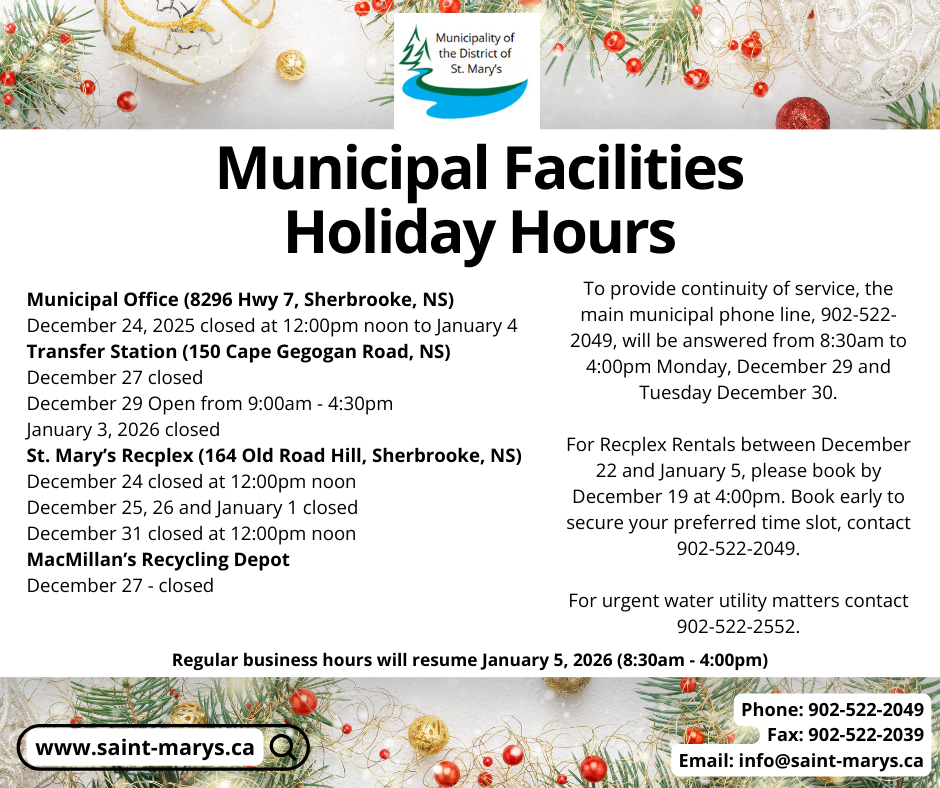Municipal News
From the Cruiser report - December 2025
The From the Cruiser Report - December 2025 is now availble to view.
ECRL - Sherbrooke Holiday Hours

Sherbrooke Public Library
CLOSED on the following days:
December 24
December 25
December 26
December 31
January 1
Happy Holidays!
COTW - January 7, 2026

NOTICE
MEETING: Committee of the Whole
DATE: Wednesday, January 7th, 2025
TIME: 5:00pm
PLACE: Council Chambers, 8296 Highway 7, Sherbrooke
- Call to Order
- Roll Call
- Additions to the Agenda
- Approval of the Agenda
- Approval of Minutes of COTW held Wednesday December 3rd, 2025
- Business Arising from Minutes
- Correspondence
- Other Matters of Business
a. 5 Years of Service Award – Mallory Tibbo
b. 20 Years of Service Award – Marian Fraser
c. Staff Report – Disposal of Real Property Policy
d. Staff Report – Transfer Station, Construction & Demolition (C&D)
e. Staff Report – 2026 Property Tax Assessment Roll Summary
f. Staff Report – 2026/27 Uniform Assessment
- In-Camera: Contract Negotiations
Adjournment
Municipal Facilities Holiday Hours!

Municipal Office (8296 Hwy 7, Sherbrooke, NS)
December 24, 2025 closed at 12:00pm noon to January 4
Transfer Station (150 Cape Gegogan Road, NS)
December 27 closed
December 29 Open from 9:00am - 4:30pm
January 3, 2026 closed
St. Mary’s Recplex (164 Old Road Hill, Sherbrooke, NS)
December 24 closed at 12:00pm noon
December 25, 26 and January 1 closed
December 31 closed at 12:00pm noon
MacMillan’s Recycling Depot
December 27 - closed
To provide continuity of service, the main municipal phone line, 902-522-2049, will be answered from 8:30am to 4:00pm Monday, December 29 and Tuesday December 30.
For Recplex Rentals between December 22 and January 5, please book by December 19 at 4:00pm. Book early to secure your preferred time slot, contact 902-522-2049.
For urgent water utility matters contact 902-522-2552.
